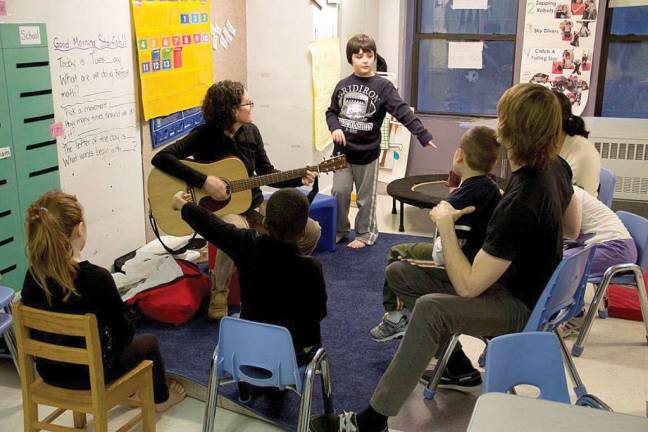Autism Not Specified But Pervasive

The hardest condition to define on the autism spectrum: PDD NOS Autism now affects one in 88 children in the United States, according to a recent study released by the Centers for Disease Control and Prevention last month. That's a 23 percent increase over the last two years and a 78 percent increase in the last decade. Doctors and experts agree that this staggering jump may bring feelings of fear and confusion to an already little understood disorder. The cause of autism, a neurological developmental disorder, is still unknown, though most science currently available points to a mixture of genetic and environmental factors. Similarly, the cause of the recent increase is not fully understood; it's unclear whether the number represents more cases or simply better detection and screening. "The most important thing is that there are more kids who are identified with autism spectrum disorders, so we need to plan accordingly for services that address that," said Dr. Catherine Lord, director of the Center for Autism and the Developing Brain at New York-Presbyterian/Weill Cornell and Columbia. "No matter why they're there, they clearly exist." The actual diagnosis of autism can be just as confusing. The three most common disorders on the autism spectrum are autism, Asperger's syndrome and pervasive developmental disorder not otherwise specified (PDD NOS). Autism is characterized by difficulties in social interaction and verbal and nonverbal communication and repetitive behaviors. Asperger's syndrome is considered to be on the high end of the autism spectrum; the symptoms are less severe and people with this disorder tend to preserve linguistic and cognitive development. PDD NOS is the diagnosis used to describe individuals who do not fully meet the criteria for autism or Asperger's syndrome. Dr. Andrew Gerber, assistant professor of clinical psychology and director of the Developmental Neuropsychology Program at Columbia University, said this last diagnosis tends to be the most difficult for parents to understand because it does not seem to be defined. "It can be terribly confusing," he said, "because it could mean so many different things." However, Gerber emphasizes that the focus should not be on the diagnosis but on the individual needs of the child. "The optimal model of care is to focus on a description of your child's strengths and weaknesses and what we can do to bolster the child's strengths and address his or her weaknesses," he said. The diagnosis is important, however, to help families get the services they are entitled to. While it varies from state to state, children in New York with PDD NOS are entitled to the same services as those with other disorders on the autism spectrum, though they may be entitled to fewer hours of service. These include early intervention for children under 3, which can consist of at-home educational treatments and occupational, language and speech therapy. When kids get older, they are eligible for special preschools, which are run by both for-profit and nonprofit agencies. All school-aged children are entitled to "free and appropriate" public education, according to the federal Individuals with Disabilities Education Act. Insurance companies may also pay for some services like speech, language and behavioral therapy, as well. Children and adults with PDD NOS are treated similarly to those with other disorders on the autism spectrum. The most well-studied method of treatment is applied behavioral analysis, which relies on intensive behavioral intervention and teaches targeted skills and behaviors through positive reinforcement. "It encompasses a lot of different techniques, but they all involve the idea that you learn to do things in a certain situation by recognizing the signs that now is a good time to act in a certain way, then you are rewarded for acting in that way," Lord explained. A perhaps lesser-known model, the developmental individual differences relationship-based model, is utilized by Rebecca School, a private day school for children with autism in Manhattan. "We focus on relationships as the foundation of learning and pay close attention to each child's individual needs," said Dr. Gil Tippy, the school's clinical director. Instead of using reinforcement, Tippy said, children learn to relate, communicate and think critically about the world through developing relationships with teachers, staff and each other. There has been an ongoing push to change the definition of autism in the fifth edition of the Diagnostic and Statistical Manual of Mental Disorders. The new criteria is more restrictive and would combine the three subgroups of the autism spectrum into one category, requiring children to exhibit more pronounced symptoms to qualify for the diagnosis. Some fear that these changes will reduce the number of people who are diagnosed with autism and qualify for treatment. "The main concern that I have is that state and federal governments and health care providers will use the new severity scale to exclude those people who look like their ASD [autism spectrum disorder] is less severe," said Tippy. However, opposing voices say the new changes will help improve autism diagnoses. "These redefinitions are part of a general effort to improve all diagnoses in mental health," Lord said. "It's not that autism was picked out specifically. The American Psychiatric Association periodically tries to look at what has been learned in the last decade or two to make the definitions more accurate."